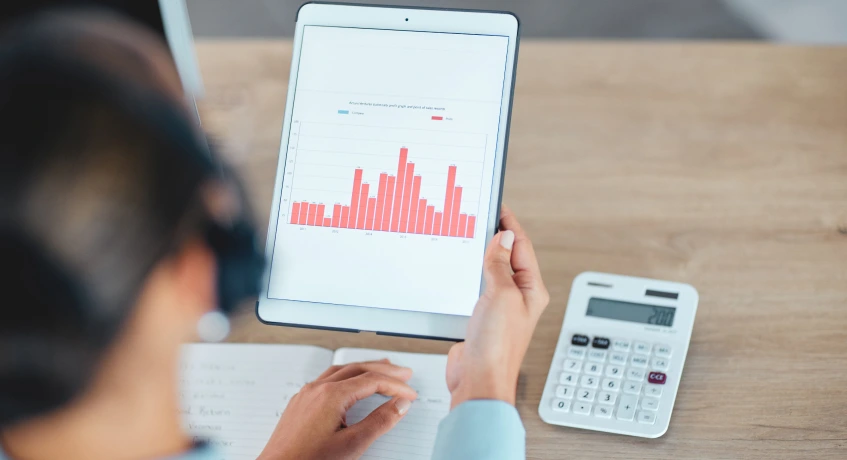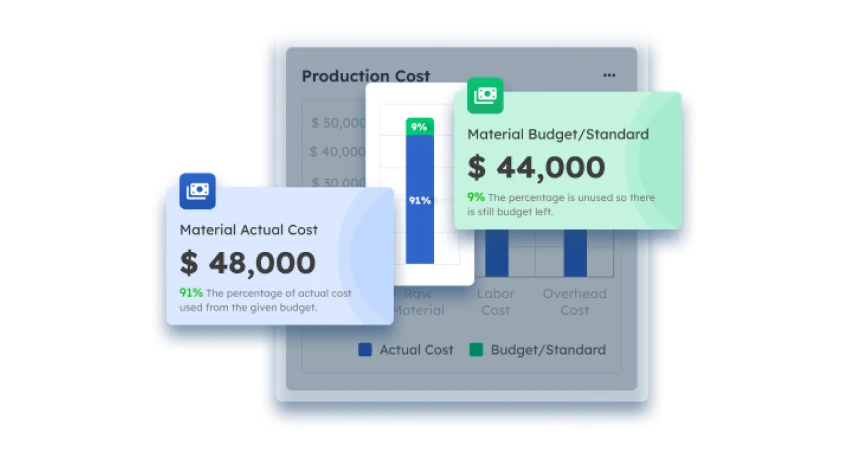An accounting system is a set of procedures and controls that record and summarize business transactions. It also creates reports to help decision-makers monitor and improve operations. This system can promote accuracy, transparency, and compliance with legal and regulatory norms by recording, processing, and reporting financial transactions.
These systems are critical in keeping structured financial records, allowing firms to track income, expenses, and overall performance. With features like automation and real-time reporting, an accounting system reduces errors, enhances decision-making, and fosters operational efficiency.
Businesses ranging from startups to major businesses rely on these technologies to meet regulatory obligations and assist in long-term financial planning. A recent report indicates that the accounting ERP market in Singapore was valued at USD 481.29 million in 2023 and is projected to reach USD 910.77 million by 2029, growing at a compound annual growth rate (CAGR) of 11.05% during this period.
Adopting a robust accounting system not only simplifies complex processes but also gives businesses insights to stay competitive in today’s fast-paced corporate world.

What is an Accounting System?
An accounting system is a platform for monitoring an organization’s assets, liabilities, income, and expenses as a whole. All business in Singapore transactions are recorded directly in the general ledger, so CFOs, treasurers, and supervisors can access accurate and up-to-date financial information.
This system is also a structured framework for capturing, recording, processing, and reporting a company’s financial transactions. Accounting systems may operate using paper records, but the majority are built on accounting software platforms.
It serves as the foundation of financial management, systematically tracking cash flow, monitoring assets and liabilities, and generating essential financial statements.
Additionally, many systems offer features like accounts receivable, accounts payable, and payroll management. These integrated components ensure accurate records, regulatory compliance, and actionable insights, enabling informed decisions and fostering operational transparency. Key components of accounting systems include:
- Journals for recording transactions,
- Ledgers for organizing entries by account,
- Financial statements, such as balance sheets, income statements, and cash flow reports summarize financial health.
Importance of Accounting System for Singapore Companies

Accounting systems help companies by simplifying financial procedures, maintaining accuracy, and providing important information. The systems play a vital role in enabling companies to manage resources effectively and comply with requirements. Here are the importance of the system:
1. Accuracy and Compliance
Accounting systems minimize human errors by automating calculations and processes, ensuring precise financial records. They also help businesses comply with tax laws and financial regulations, such as the Singapore corporate tax rate, by generating accurate reports and maintaining audit-ready documentation.
2. Informed Decision-Making
These systems provide real-time financial insights through detailed reports and analytics. This allows business executives to make data-driven decisions, track financial health, and strategize for development and sustainability.
3. Operational Efficiency
Automation of repetitive tasks, such as invoicing and payroll, enhances operational efficiency. Accounting systems save time and reduce administrative burdens, allowing employees to focus on value-adding activities that drive business success.
4. Financial Transparency
Accounting systems provide transparency by integrating financial data on a consolidated platform. This enables stakeholders to clearly track spending, revenues, and cash flow, creating internal trust and accountability.
5. Scalability and Integration
Modern accounting systems are designed to scale with business growth and integrate with other tools like ERP and CRM. This enables seamless data exchange across departments, supporting a unified approach to resource management and planning.
Also Read: Understanding Salvage Value and Its Role in Accounting
Types of Accounting Systems
accounting systems have several types, each designed to meet various business needs and provide solutions for business financial management according to regulations in Singapore. Understanding these types helps organizations choose the most effective system. Here are the types of accounting systems:
1. Manual Accounting Systems
Manual accounting relies on physical records and spreadsheets for tracking transactions. While cost-effective for small businesses, it is labor-intensive and prone to errors, making it less suitable for larger or growing organizations. For more accurate cost tracking, businesses may prefer methods like full costing, which provide a more comprehensive view of expenses.
2. Computerized Accounting Systems
These systems use software to automate accounting tasks like bookkeeping and report generation. They ensure accuracy, save time, and are scalable for businesses of all sizes, making them widely adopted across industries.
3. Cloud-Based Accounting Systems
Cloud-based accounting systems allow access to financial data anytime, anywhere through the internet. They provide real-time updates, increased security, and integration possibilities, making them suitable for enterprises that need flexibility and remote access.
4. Enterprise Resource Planning (ERP) Systems
ERP systems integrate accounting with other business functions such as inventory, sales, and HR. These comprehensive solutions are best for medium to large organizations needing seamless cross-departmental operations and centralized data management. Additionally, banking ERP software is beneficial for financial institutions by integrating banking operations with business processes, improving efficiency and ensuring real-time financial management.
5. Hybrid Accounting Systems
Hybrid systems combine on-premise and cloud-based functionalities, offering businesses flexibility in data management. They are suitable for companies transitioning to digital solutions while maintaining some traditional processes for specific operational requirements.
Must-Have Features of Accounting Systems

Accounting systems provide superior features that help Singaporean companies speed up financial procedures, and improve accuracy. These features will manage transactions, create reports, and prepare budgets more efficiently. Here are the features that must be present in an accounting system:
1. Financial Reporting
Robust financial reporting tools generate key documents including income statements, balance sheets, and cash flow reports. These features provide real-time financial health information, allowing firms to stay compliant and make informed decisions.
2. Transaction Recording
Accounting systems automate transaction recording, ensuring accuracy and consistency in tracking income, expenses, and other financial activities. This feature reduces manual errors and provides a reliable foundation for financial analysis and reporting, including the proper management of prepaid expenses.
3. Accounts Management
Managing accounts receivable and payable efficiently simplifies creating invoices, tracking payments, and handling collections. This capability also allows companies to analyze their payment cycles using key metrics like the accounts payable turnover ratio and formula, which helps optimize cash flow and lower the chances of missed or late payments.
4. Budgeting and Forecasting
Businesses use advanced budgeting and forecasting systems to prepare for future spending, allocate resources, and anticipate financial outcomes. These tools help you create achievable goals and prepare for potential financial issues.
5. Tax Compliance Automation
Accounting systems simplify tax calculations and filing by automating processes like VAT tracking and tax return preparation. This feature reduces errors, according to Springer Nature, ensures tax compliance with regulations, and saves time during tax season.
6. Bank Reconciliation
These features are critical for an accounting system, as they ensure the accuracy of financial records by matching transactions recorded in the accounting software with those on the bank reconciliation statement. This process helps identify discrepancies, such as missing entries, duplicate transactions, or errors and ensures that the organization’s cash balance is correct.
7. Automated Bookkeeping
An accounting system with automated bookkeeping can streamline the recording and organization of financial transactions, eliminating the need for manual data entry. This system uses software to capture, categorize, and record transactions in real-time, which reduces human error and enhances efficiency.
8. Real-Time Data Access
Real-time data access allows users to view and analyze financial information instantly, providing up-to-date insights into an organization’s financial health. This feature enables CFOs, managers, and other stakeholders to make informed decisions quickly, as they can access current data on cash flow, expenses, revenues, and more.
Also Read: Understanding Singapore Accounting Standards for Compliance
Key Processes in the Accounting System
Accounting systems are processes that help companies handle critical tasks to ensure accurate financials, compliance, and better decisions. These processes include critical steps that are carried out optimally to ensure accurate reporting and regulatory compliance as per Singapore regulations. Similarly, when selecting accounts payable automation software, comparing features, pricing, and performance is essential to find the best fit for your business.
1. Transaction Recording
The transaction recording process is the first step in the accounting cycle, involving the capturing of all financial activities, such as sales, purchases, and payments, in journals or software. Accurate transaction recording ensures a reliable foundation for subsequent accounting activities and financial analysis.
2, Ledger Management
Ledgers consolidate transaction data by account and categorize revenue, expenses, assets, and liabilities. An efficient general ledger system ensures businesses can consistently monitor financial activity and generate reliable financial statements for decision-making. Proper ledger management is critical for maintaining accuracy and transparency in your financial records.
3. Financial Reporting
Accounting systems generate important financial statements like income statements, balance sheets, and cash flow reports. This process provides stakeholders with insights into the business’s financial performance and compliance readiness.
4. Budgeting and Forecasting
Budgeting involves allocating resources based on financial data, while forecasting predicts future financial trends. This process helps businesses make informed decisions, control expenses, and prepare for growth opportunities or challenges.
5. Compliance and Auditing
Accounting systems facilitate adherence to tax regulations and financial standards by automating tax calculations and maintaining audit trails. This procedure ensures legal compliance and simplifies external and internal audits.
Accounting System Pros and Cons in their Implementation
In today’s fast-paced business environment in Singapore, choosing the right accounting system can make or break a company system’s financial success. While these systems offer cutting-edge features, this system also comes with its own set of challenges. Here are the pros and cons system accounting:
| Pros | Cons |
|---|---|
|
|
Differences Between Single-Entry and Double-Entry Accounting Systems
The accounting system has two recording methods, namely: Single entry and double entry accounting systems are the two main methods for recording financial transactions. Each of these methods can serve different business needs. Here’s the Differences Between the two methods for Singapore companies:
The single-entry system is simpler and ideal for small businesses with straightforward financial activities, while the double-entry system offers greater accuracy and comprehensive tracking, making it suitable for larger or more complex organizations. Here are the main differences, summarized in the table below, to help you make an informed decision.
| Single-entry Accounting System | Double-entry Accounting System |
|---|---|
|
|
How to Choose the Right Accounting System?
Choosing the right accounting system is important for any business, as it ensures accurate financial records, supports compliance, and improves operational efficiency in companies. A well-suited system can streamline processes, save time, and provide valuable insights for informed decision-making.
1. Assess Your Business Needs
Start by identifying your business’s specific requirements to ensure the software aligns with your operations. Evaluate factors like your industry, company size, transaction volume, and team expertise to avoid unnecessary features and choose a solution tailored to your needs.
2. Consider Integration Capabilities
Ensure the software can seamlessly integrate with essential tools such as e-commerce platforms, payment systems, payroll software, and banking tools. This compatibility reduces manual data entry, minimizes errors, and streamlines workflows for a more efficient operation.
3. Evaluate User-Friendliness
Choose accounting software that is easy to use, even for non-experts. The best accounting software offers include features like clear dashboards, configurable reports, and built-in tutorials. User-friendly technologies save time, increase productivity, and minimize the need for extensive training.
4. Analyze Cost
Determine the total cost of ownership, which includes subscription fees, setup costs, training, and continuing support. Understanding the cost breakdown structure is essential for evaluating the financial implications of your investment. Compare pricing models, such as per-user subscriptions or tiered plans, to find a solution that fits your budget without compromising on essential features.
ScaleOcean Singapore: A Leading Accounting Software Solution

In today’s rapidly evolving business landscape, effective financial management can distinguish a company from its competitors. ScaleOcean’s Accounting Software provides a comprehensive and integrated solution tailored to streamline financial processes while ensuring compliance with regulatory standards, including IFRS.
This powerful software facilitates end-to-end financial reporting and automates essential tasks such as transaction recording. This system also integrates effortlessly with external systems, enhancing overall operational efficiency.
Specifically designed to support Singaporean enterprises, ScaleOcean enables businesses to manage their finances accurately and adapt to local compliance requirements. To explore its full range of features, companies can access our free demo, allowing them to see how ScaleOcean can be customized to meet their specific needs.
Key features:
- Auto-Reconciliation: Automatically matches bank transactions with internal records, ensuring consistent financial tracking.
- Customizable Financial Reports: Offers tailored reports aligned with company-specific and regulatory requirements.
- Real-Time Integration: Syncs data across modules for a holistic view of operations.
- IFRS Compliance: Generates accurate reports that adhere to local accounting standards.
- Cash Flow Monitoring: Provides insights into liquidity trends for better financial decision-making.
ScaleOcean’s Accounting Software helps businesses simplify complex financial procedures, decrease human error, and boost productivity. Its seamless integration with other corporate operations provides accurate data flow and agile decision-making.
ScaleOcean promotes growth and compliance by ensuring that operations adhere to local and international standards. Customization adds flexibility to the system, allowing organizations of all sizes and industries to easily adapt to individual needs.
Also Read: 20 Best Accounting Software Singapore for Your Business
Conclusion
Adopting an effective accounting system is essential for ensuring financial accuracy, streamlining processes, and driving business growth. A well-chosen system not only supports compliance but also provides valuable insights to guide informed decision-making. To maximize these benefits, businesses should assess their unique operational needs and consult with financial experts to select the most suitable solution.
By investing in the right accounting system, companies can establish a strong foundation for sustainable growth and operational efficiency. A well-designed system simplifies financial processes, reduces errors, and supports better decision-making across the business. ScaleOcean offers a free demo to help you explore how the right solution can bring tangible improvements to your organization.
FAQ:
1. What accounting system does Singapore use?
Singapore follows the Singapore Financial Reporting Standards (SFRS), which align with IFRS and use an accrual-based accounting system. This method records transactions when they occur, ensuring they are recognized in the correct period.
2. What is the 5 stage accounting system?
The 5-stage accounting system involves:
1. Collecting and analyzing transactions for accuracy.
2. Journalizing entries to record financial data.
3. Posting to the ledger for classification.
4. Trial balancing to identify errors.
5. Preparing financial reports for the reporting period, ensuring clarity and accuracy in financial statements.
3. What are the two main accounting systems?
The two primary accounting methods are cash accounting and accrual accounting. Cash accounting records transactions when cash is received or paid, while accrual accounting records revenues and expenses when they occur, regardless of cash flow. GAAP mandates the use of accrual accounting for more accurate financial reporting.
4. What is the 4-4-5 in accounting system?
The 4-4-5 accounting system is a method of structuring financial periods by dividing the year into four quarters, each consisting of 13 weeks. Each quarter is further broken down into two 4-week months and one 5-week month. This system helps standardize accounting cycles, making it easier to compare financial performance across periods.







 PTE LTD..png)
.png)

.png)








.png)
.png)
















